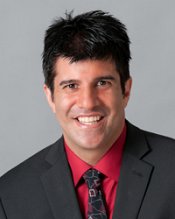If you are a college bound Connecticut student, your test scores will matter more than your “story”
By Daryl CapuanoSAT ACT Test PrepOvercoming legitimate structural hardship – as in poverty, parental drug use, and growing up amidst violent crime – make for eye catching stories. Overcoming a lacrosse injury, getting cut from the school play, and dealing with an ADD diagnosis – standard Connecticut high school resilience stories – while unquestionably challenging to the students involved are not.
That’s because we – those with the good fortune of living in towns such as Guilford, Madison, Old Saybrook, Essex, Old Lyme, East Lyme, Waterford and other Shoreline and Southeastern, CT towns usually have lives that are horribly complicated by outside forces.
As I have written elsewhere, college admissions officials are having great difficulty choosing whom to admit among the vast number of qualified candidates. College officials have told me that they have a difficult time deciphering whether a student with a 93 average from Lyme-old Lyme High School has performed better than a student with an A minus average from Valley Regional High School in Essex. Moreover, weighing extracurricular activities in a comparative way is highly subjective. The all state clarinet player versus the all state soccer star versus the class president are all pretty similar from an objective standpoint.
Other than SAT-ACT scores, the other dominant way that candidates gain an upper hand in college admissions is through “stories” about their backgrounds. Those with compelling stories are from radically different upbringings than those from Connecticut’s lush suburbs.
I review a couple hundred college essays each year for our college counseling clients. Fortunately, most of our suburban Connecticut students do not have extraordinary “challenge” stories. As is the case everywhere, there are some tough ones – death of a parent and serious health issues – being the most common. But unlike the essays I used to review for college bound students from the inner city – through volunteer work – the structural challenges of coping with life among gangs or living with absentee or drug using parents are simply different. Their subjective stories are simply more compelling in a real way.
I reiterate: we are lucky. But in relation to college admissions, Connecticut students have to rely on standing out in more objective ways.
The SAT-ACT, like it or not, fair or not, becomes the criterion that can be evaluated most objectively. That’s why it is imperative for Connecticut high school students to maximize their test scores.

CEO, The Learning Consultants and Connecticut’s top private education consultant
full bio

